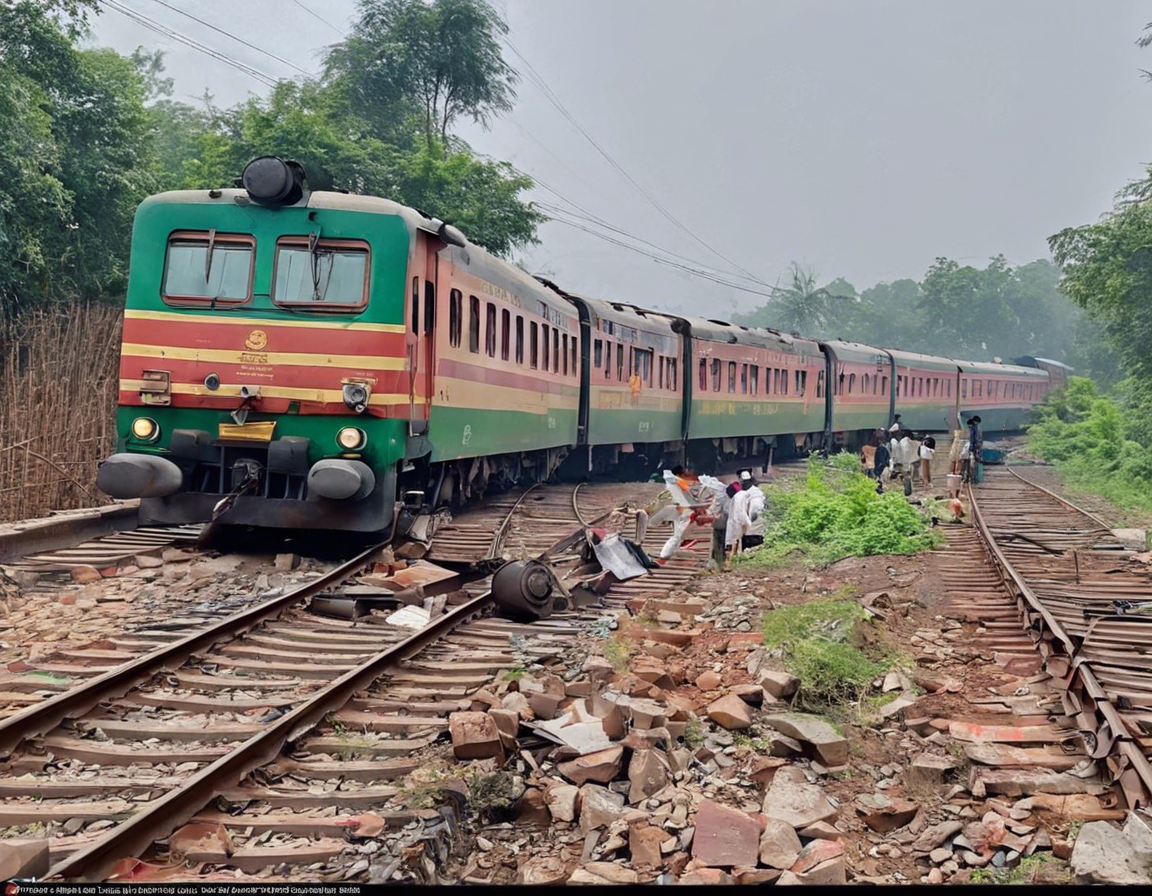The recent incident of the Jharkhand train accident has left the nation in shock. On [Date], a tragic train accident occurred in Jharkhand, India. The accident took place when a passenger train derailed, resulting in numerous casualties and injuries. The exact cause of the accident is still under investigation, but initial reports suggest that it may have been due to a track failure or a technical glitch.
The Jharkhand Train Accident: A Tragic Event
The train was on its route from [Source] to [Destination] when the mishap happened. The derailment led to chaos, with several coaches of the train toppling over and passengers being trapped inside. Emergency services were quickly deployed to the scene, with rescue teams working tirelessly to extract survivors from the wreckage.
Casualties and Injuries
As the details emerge, it is tragically evident that the accident has resulted in a significant number of casualties and injuries. The exact numbers are still being confirmed, but it is a grim reminder of the inherent risks associated with train travel.
Investigation and Accountability
Following such a devastating incident, there will undoubtedly be a thorough investigation to determine the root cause of the accident. Safety protocols, maintenance procedures, and possible negligence will all be scrutinized to prevent similar tragedies in the future.
Impact on Transportation and Safety Measures
The Jharkhand train accident serves as a stark reminder of the importance of ensuring railway safety and infrastructure maintenance. It also highlights the need for emergency preparedness and swift response mechanisms to handle such incidents effectively.
How to Ensure Passenger Safety in Train Travel
-
Regular Inspections: Conduct regular inspections of tracks, trains, and infrastructure to identify and address potential issues proactively.
-
Training and Awareness: Provide comprehensive training to railway staff on safety protocols and emergency procedures.
-
Investment in Technology: Embrace technological advancements to enhance safety features and monitoring systems.
-
Passenger Education: Educate passengers on safety protocols and emergency exits to ensure they are prepared in case of an emergency.
-
Collaboration and Communication: Foster collaboration between all stakeholders, including railway authorities, emergency services, and local communities, to streamline communication and response mechanisms.
Conclusion
The Jharkhand train accident is a tragic reminder of the importance of prioritizing passenger safety and railway infrastructure maintenance. It is crucial that lessons are learned from such incidents to prevent them from occurring in the future. Our thoughts and prayers are with the victims and their families during this difficult time.
FAQs
-
What caused the Jharkhand train accident?
The exact cause of the accident is still under investigation, but initial reports suggest it may have been due to a track failure or a technical glitch. -
How many casualties were reported in the Jharkhand train accident?
The exact number of casualties is still being confirmed, but it is known that there have been multiple casualties and injuries. -
What safety measures can be taken to prevent such accidents in the future?
Regular inspections, training, technological investments, passenger education, and effective communication are key safety measures that can be implemented to prevent similar accidents. -
How can passengers stay safe while traveling by train?
Passengers can ensure their safety by following safety protocols, familiarizing themselves with emergency exits, and cooperating with railway staff during emergencies. -
What role do emergency services play in such incidents?
Emergency services play a crucial role in providing immediate medical assistance, rescuing trapped passengers, and coordinating the overall response to mitigate the impact of such accidents.



